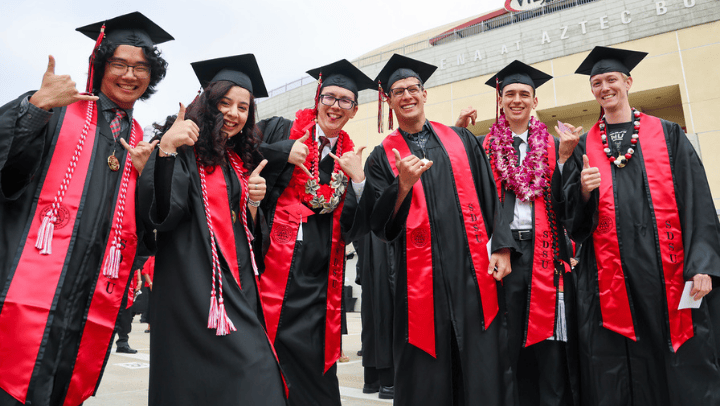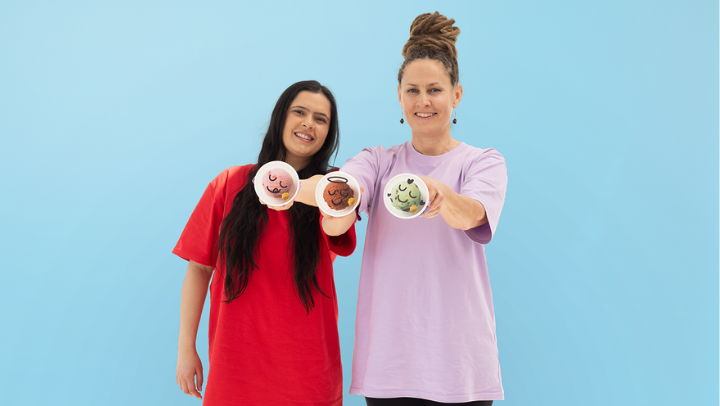New EIS Complex Highlights Collaboration
The new, cooperatively focused Engineering and Interdisciplinary Sciences Complex kicks off a new era of scientific and engineering collaboration at SDSU.

The future of scientific progress, engineering advances and medical breakthroughs will require more than pure intelligence and hard work—it will also require people from multiple disciplines to come together and pool their disparate bases of knowledge. San Diego State University’s new Engineering and Interdisciplinary Sciences (EIS) Complex is designed to be a place for that, with the promise of partnership built into its architecture. “I’m looking forward to seeing the collaborations that result from our scientists and engineers being co-located under the same roof,” said Stephen Welter, vice president for research and dean of Graduate Affairs. “The new complex has a world-class set of labs and facilities that just did not exist on this campus before.” The 85,000-square-foot, $90 million complex is designed to encourage cooperative thinking. It features mobile furniture to assemble quick meetings; glass walls to keep an eye on what others are working on; communal whiteboards in the hallways for spur-of-the-moment brainstorming; and a coffee shop to fuel all this genius. The Thomas B. Day Quad—named for SDSU’s sixth president who championed the university’s research expansion and whose family’s generous donation was integral to the complex’s construction—serves as the building’s central meeting place. Numerous spaces within the complex are named after other donors who support SDSU's mission of becoming a top public research university. (Naming opportunities are still available for several critical facilities within EIS.) Aesthetically, its California Mission Revival style draws on the modest yet functional designs of the state’s early adobe missions and mirrors the architecture of other iconic campus buildings like Hepner Hall, Hardy Tower and the Conrad Prebys Aztec Student Union. The new building doubles the amount of existing classroom space for engineering students and features 17 new lab spaces and research facilities. They include the Conrad Prebys Viromics Center, the Gate Center for Electric Drive Transportation, the Wind Energy Lab, the Solar Energy and Fire Research Lab, the BioEngineering Wearable Devices Lab, and the Brain Imaging Center, which houses SDSU’s first magnetic resonance imaging (MRI) machine. The presence of these new labs and classroom spaces, together with innovative research programs and cutting-edge equipment, will help the university recruit superstar new faculty members and top-tier undergraduate and graduate students. The complex also provides space for student clubs and organizations like the SDSU Rocket Project and Aztec Baja SAE auto racing club. To help teach valuable entrepreneurial skills and bring collaboratively-developed products to market, the EIS Complex also houses the William E. Leonhard Entrepreneurship Center, an umbrella for the Zahn Innovation Platform Launchpad, the Idea Lab and the Lavin Entrepreneurship Center. Having scientific research, engineering know-how and entrepreneurship and prototyping expertise all under the same roof will make the EIS Complex a unique and powerful hub for problem-solving, Welter said. “The EIS Complex will coalesce many of our entrepreneurial strengths within a shared space, and that will be a phenomenal synergizer for all of our different programs,” he said. This constellation of scientific, engineering and business acumen will spur new alliances with local, national and international industry partners, added Stanley Maloy, associate vice president of research and innovation. “In talking with people from industry who’ve seen the new complex, I’ve learned they think it’s a great space,” said Maloy. “They know that the future of many fields of research—from biomedicine to energy to materials engineering—spans disciplines, and they are excited to see that SDSU is putting collaboration and entrepreneurship front and center.”



